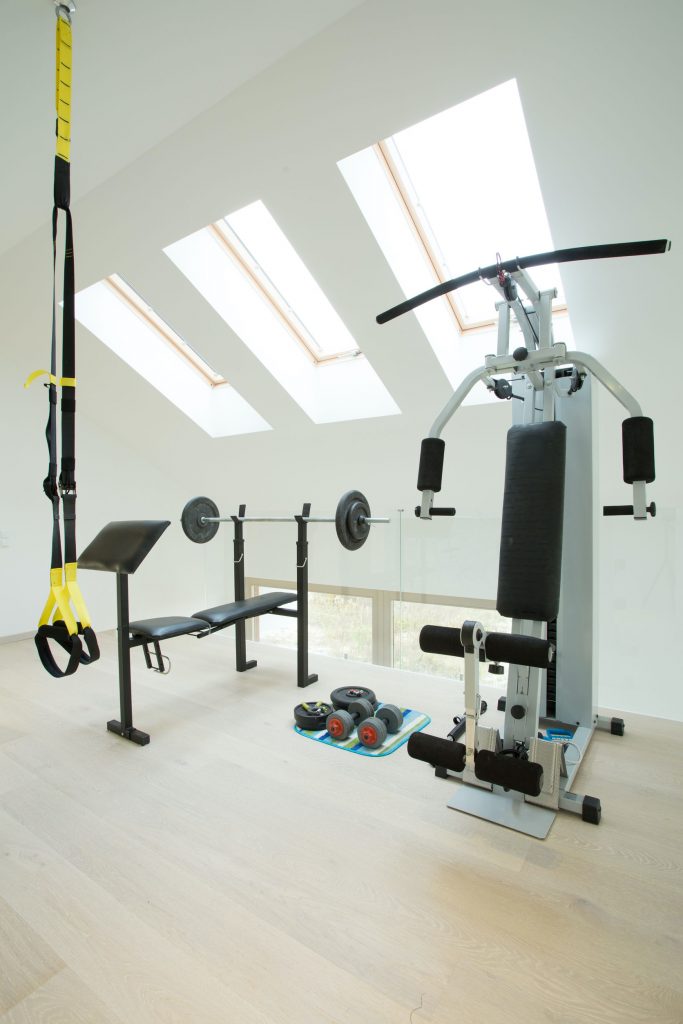For some it may feel that we’re in the 97th Lockdown since the Covid pandemic gripped the entire world with its ugly and devasting hold. Since we’ve all be force to retreat into our homes, the longing for what we used to do is strong. Simply things like going to a bar, eating in a restaurant or working out at the gym have been swiped away with one stroke of an antibacterial wipe. The truth is that we miss those simple things so much because of how it made us feel – to be social, to be amongst others and to work out.
All these desire can be linked back to our psychological need to do things that made us feel good. The gym made us feel good – it might have hurt at the start or the way through, but once a workout was complete the uplift in those feelgood emotions had us hooked for more. So as the lockdowns took away another part of our daily routine, many discerning gents have been looking at ways to bring the gym to them in the form of a home gym.
Elysium Magazine spoke to Mark Reynolds, owner of WeMakeGyms.com to talk us through the various factors one should consider when thinking about creating a gym space in your home. The business has created some of London’s most exquisite, state of the art gyms, from basements to attics, stand-alone garden rooms and everything in between. All that he asks his clients to consider is 1) room size including ceiling heights as some strength or cardio machines can exceed 2.3m in height, 2) ventilation (open windows or air conditioning), 3) availability of natural light and finishing touches like AV systems and 4) interior fascia. However, Mark is able to overcome almost all of this, no job is too big or too small.
Like many of his clients, the real issue with home gyms is space restrictions, at this point, he has to be clever with space, from multifunctional, cost effective and space saving solutions, such as the fitness wall, which allows a multitude of exercises, whilst being flush to the wall, and opening up to reveal storage, to cardio equipment with the technology that allows for a variety of on demand exercise classes.
For those with restricted space, he recommends the following:
- If you have the space to dedicate to a workout area within a larger room (sitting room, bedroom room etc.) a sliding door will take up less space than a swing door and keep the area private and separate from the rest of the room. You could even use curtains to divide the space.
- To keep workout gear organised, hang some shelves or get a small storage unit.
- If you don’t want to build in a door, a portable screen can be effective in providing a division within the room.
- If the space is permanent, you may want to think about flooring. You can go for temporary interlocking rubber mats, or something more durable and permanent such as rubber flooring in tiles or rolls. This will provide physical and audible cushioning for your work out, and prevent slipperiness from sweat and/or fast movement.
- Keep your form in check by making a mirror wall part of your design scheme, it can brighten up the space, make it feel much larger and help you work on your form.
- Bulky weights can be a problem when arranging storage, but careful storage design can solve this issue.
- Wall workouts are popular, especially for tight spaces, because they don’t require bulky equipment. Fitness walls allow for a multitude of exercises, whilst being flush to the wall, and opening up to reveal storage. A fitness wall can incorporate hooks/bars to attach resistance bands, to attach a TRX or other suspension training apparatus, as well as varying built-in equipment like cable pulleys, battle rope pulleys or medicine ball rebounders right up to a wall mounted folding squat rack for compound power exercises with an Olympic bar and weight plates for squats and other strength exercise patterns.
A basic custom-designed setup in a small area (one cardio machine, dumbbells, adjustable bench, flooring) will cost around £2,500 – £5,000.
On the subject of how a workout benefits mental health and wellbeing, one of his predictions for Fitness Trends in 2021, was holistic health and making sure to incorporate a slower paced exercise into your weekly fitness regime. The unique experience of a pandemic has brought health into focus more so than ever before. Fitness is a key part of the holistic health approach, well known to strengthen the immune system. Ideally you want to have good physical and mental health alongside fitness. Holistic programmes cater to short term as well as long term fitness and health goals, including weight loss, heart health and immunity.
So there you have it, the most important considerations to take into account if you are thinking about creating your very own personal gym within your home.



One Response